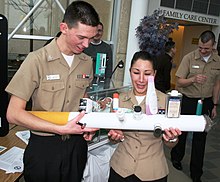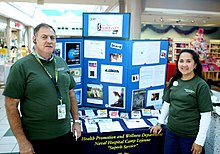Great American Smokeout
The Great American Smokeout is an annual intervention event on the third Thursday of November by the American Cancer Society.[1] Approximately 40 million American adults still smoke, and tobacco use remains the single largest preventable cause of disease and premature death in the country. The event challenges people to quit on that day, or use the day to make a plan to quit.

History

The first Great American Smokeout was held in San Francisco's Union Square on November 16, 1977.[2] The event evolved from a series of smaller-scale initiatives. In 1970, in Randolph, Massachusetts, Arthur P. Mullaney suggested people give up cigarettes for a day and donate the money to a local high school. In 1974, a "Don't Smoke Day" (or "D-Day") was promoted by Lynn R. Smith of the Monticello Times in Monticello, Minnesota.[1] On November 18, 1976, the California Division of the American Cancer Society successfully prompted nearly one million smokers to quit for the day. That California event marked the first Smokeout.[1][3]
The name has resulted in some confusion due to colloquial usage of the term smokeout, which, (among other things), suggests an activity centered on a large amount of solo or group smoking.
.jpg)
See also
References
- "History of the Great American Smokeout". American Cancer Society. Retrieved 2012-10-24.
- "THE GREAT AMERICAN SMOKEOUT RALLY UNION SQUARE, SA..." Retrieved 15 June 2013.
- "Annual Smokeout Programming". Archived from the original on 13 October 2013. Retrieved 15 June 2013.